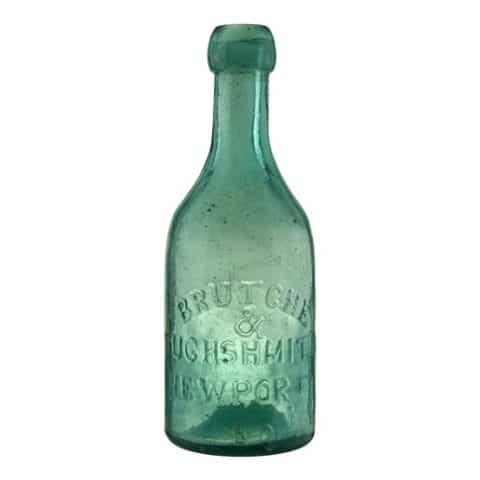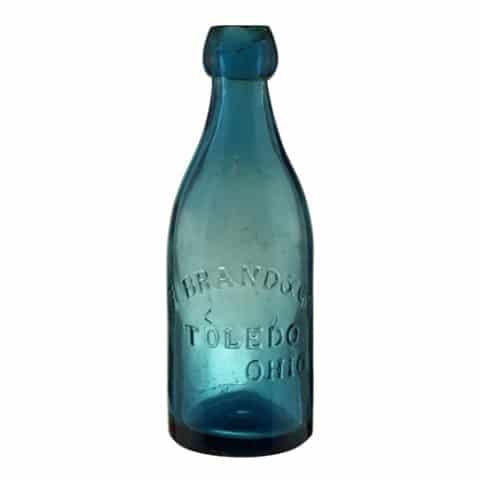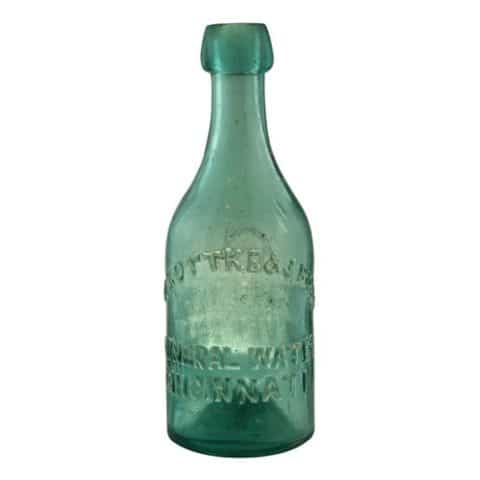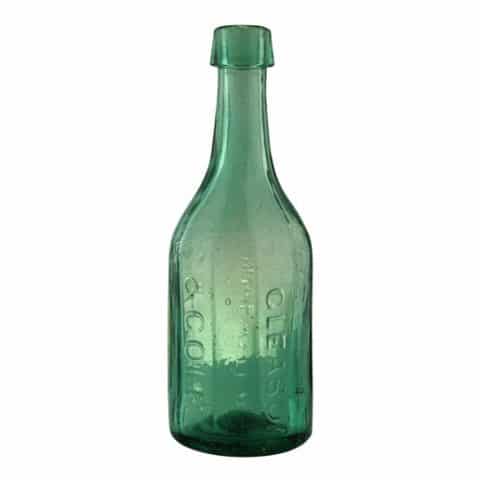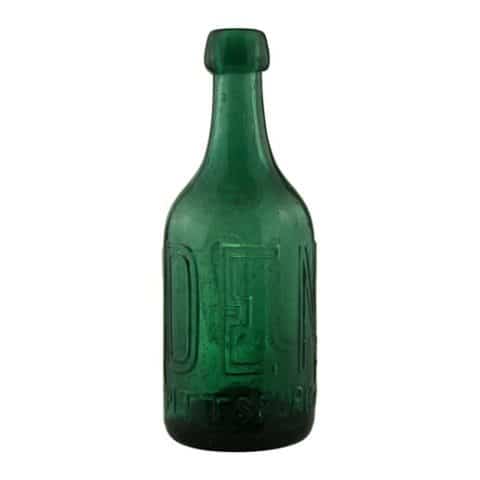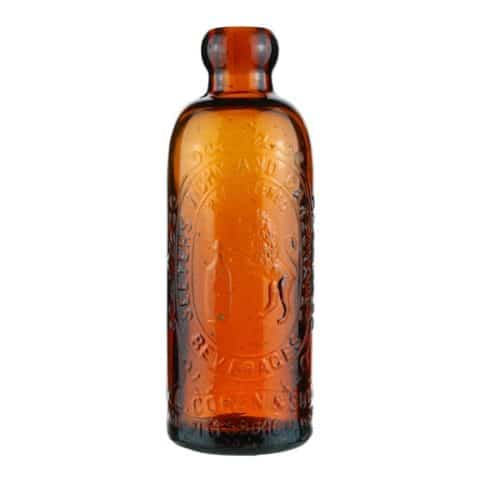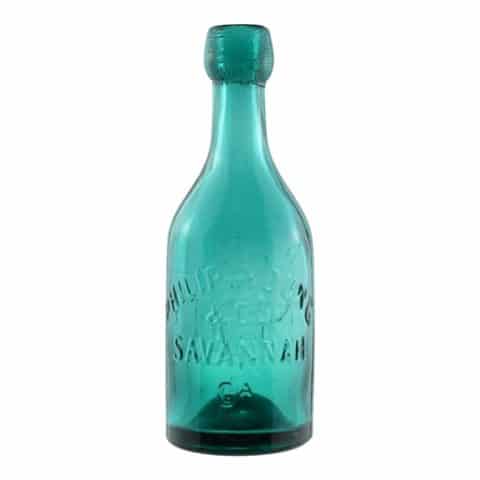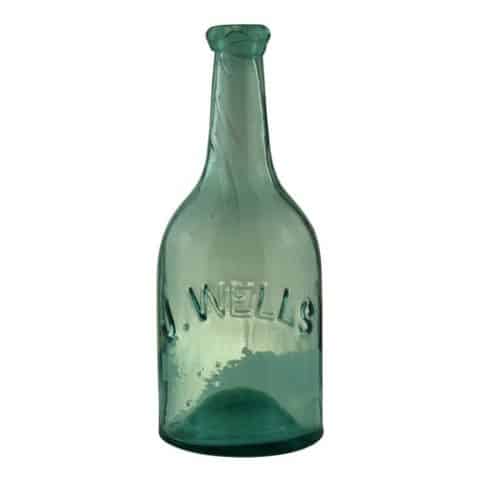Bentley’s Mineral & Soda Waters Patent
Bentley’s
Mineral & Soda Waters
Patent
David Bentley & Sons, Philadelphia, Pennsylvania
Green Cylindrical Soda
Provenance: Tod von Mechow Collection

This exquisite early “Bentley’s Mineral & Soda Waters” bottle is outstanding and unique in this condition. The bottle dates to 1843-1844 and has the appearance and color of being manufactured at the Dyottville Glass Works. One damaged bottle was found in Columbia, Pennsylvania, and a damaged whole example was found in the area of Northern Liberties close to North Third Street in Philadelphia.
The green bottle is embossed ‘BENTLEY’S MINERAL & SODA WATERS’ in three centered horizontal lines of sans serif type on the face of the bottle. The word ‘PATENT’ is embossed on the reverse. The cylindrical bottle measures 6 5/8 by 2 7/16 (3 1/2) inches and has a short tapered collar and a pontil scar. A cork was used as a closure.

Before soft drinks, there was a significant mineral and soda water industry in the United States, populated mainly by regional manufacturers. Water quality was a considerable concern in the antebellum days of cholera epidemics. Mineral or soda water was considered safer than well or other flowing water.
The difference between “soda water” and “mineral water” during the 19th century was often vague. Soda water was generally considered flavored artificial mineral water with the purposeful addition of carbonation and various compounds and flavoring. Mineral or spring water, as it was also called, would generally be natural waters from spring sources that were typically highly mineralized with carbonates like alkaline, sulfurous compounds, and or various salts, which often carbonated naturally. The confusion sometimes arises when mineral water was used as a generic term applied to various natural and artificially carbonated, non-artificially flavored waters, including many utilized for their perceived medicinal qualities. Please visit the Museum Spring & Mineral Water Gallery.
Bentley & Sons, like William Heiss, were Philadelphia coppersmiths. David Bentley was born about 1783. As early as 1813, he was listed as working as a coppersmith. In 1820, he partnered with John Bentley under the name of David & John Bentley as coppersmiths and sheet metal workers at 112 North Fourth Street. By 1825, they had relocated to 162 North Third Street, their permanent location for the next 55 years. As an aside, in 1857, the streets in Philadelphia were renumbered, and 162 North Third Street became 254 North Third Street. Sometime during 1833 and 1834, John Bentley left the firm, and David Bentley continued to operate the business alone.
See the Museum example of a “Wm. Heiss Jr. Manufacturer of Superior Mineral and Soda Waters Philida.“
In 1842, David Bentley took his sons into the business. The sons were John, J. B., and David C. The name of the firm was changed to David Bentley & Sons. In 1843 or 1844, Bentley & Sons started manufacturing soda and mineral waters, a natural extension of the business, as they likely were manufacturing the copper apparatus to manufacture these waters. Over the years, the sons dropped out of the company, and David was listed as the sole member of the firm.
In 1860, Dvid Bentley’s wife Anne C. was listed as a partner, and on David’s death in about 1877, she became the sole partner in the firm. The firm appears to have been dissolved during 1879, as it is not listed in the 1880 Directory.
Primary Image: Bentley’s Mineral & Soda Waters bottle imaged on location by Alan DeMaison, FOHBC Virtual Museum Midwest Studio.
Support: Research by Tod von Mechow, Early Soda & Mineral Water Bottles, 1840-1844 The Explosion.
Support: Reference to Soda & Beer Bottles of North America, Tod von Mechow.
Join the FOHBC: The Virtual Museum is a project of the Federation of Historical Bottle Collectors (FOHBC). To become a member.












